More mangroves, more life
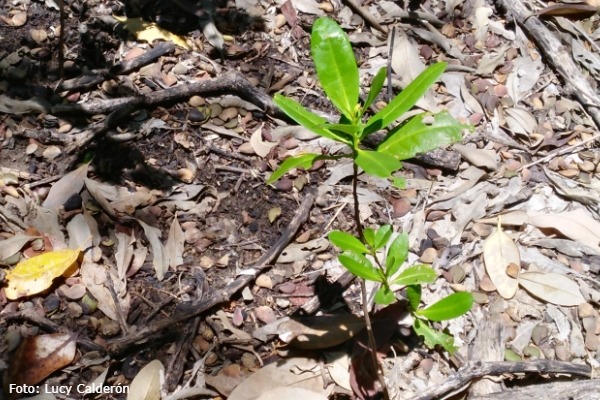
This is the black mangrove Avicennia bicolor Standl.
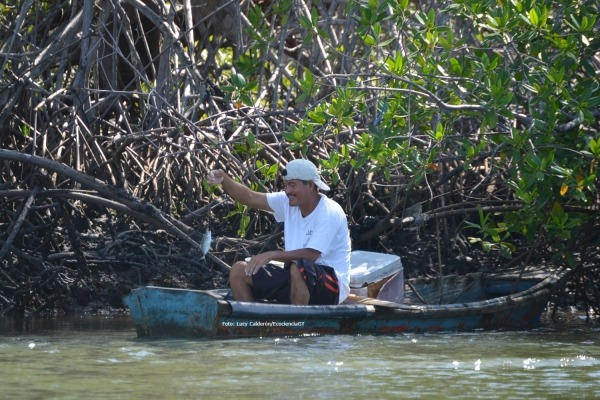
Mangroves offer shelter to many commercial fish species and for family consumption. Photos: Lucy Calderón/EcocienciaGT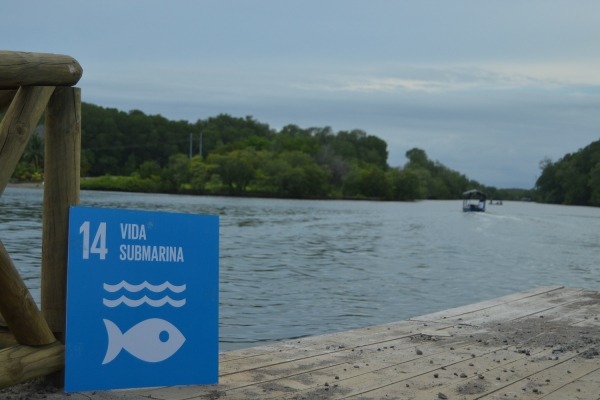
Mangrove conservation, restoration and reforestations contributes to achieve the Sustainable
Development Goal 14, which remind us that more than three billion people depend on marine
and coastal biodiversity.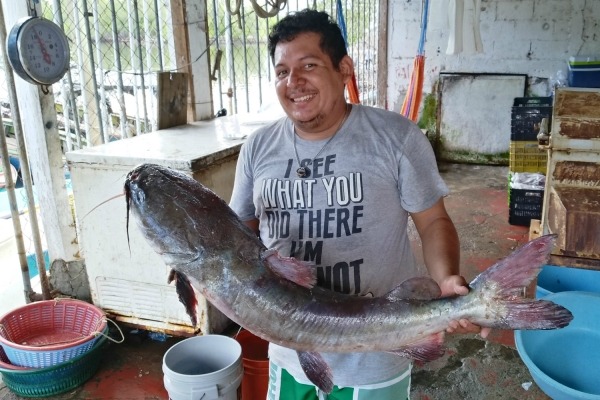
With great happiness this fisherman from Las Lisas shows us a 12 pound fish. 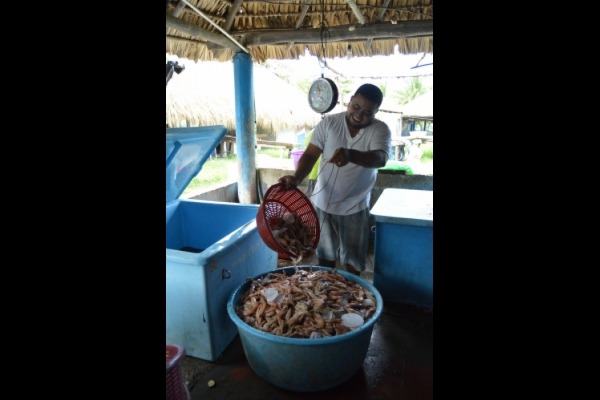
Shrimps are also desired in coastal communities.
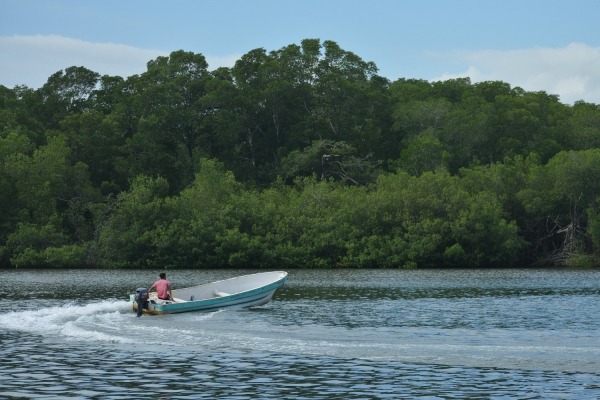
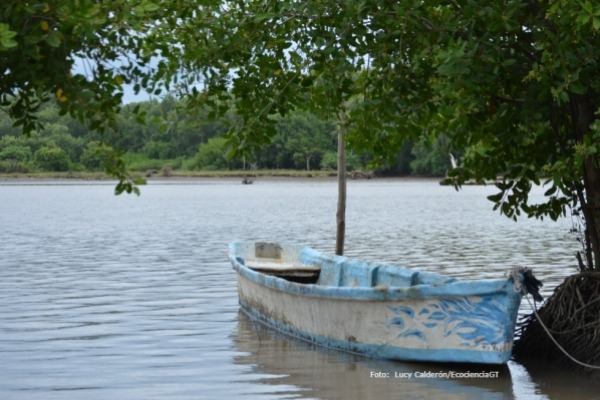
Las Lisas Beach, located at municipality of Chiquimulilla, department of Santa Rosa, Guatemala. Photo: Lucy Calderón/EcocienciaGT
Forests and water have always pleased him, so working on the study and conservation of the mangrove ecosystem -which brings together these two elements- is the best thing that could have happened to the in fieri environmental engineer César Zacarías Coxic.
For this reason, Zacarías feels so happy about knowing and sharing that in Guatemala, it was recently confirmed that there are new black and red mangrove species: the Rhizophora racemosa G. Mey or red mangrove, and the Avicennia bicolar Standl called black or Ixtaten mangrove.
"The existence of these new species of woody shrubs that grow in the limit where the river’s fresh water and the seas’ salty water join is a news that all Guatemalans must value, because those species adds to the already described for the country and they also contribute to strenghten the country’s rich megadiversity," says Zacarías, head of mangroves at the National Forest Institute (INAB, by its acronym in Spanish).
In addition, "this scientific discovery is a call and an opportunity to carry out new research and conservation strategies for the forest resource, which all sectors involved in the management and sustainable protection of our natural resources should always bear in mind before making administrative, economic, political or technical decisions that may affect them," adds Zacarías.

César Zacarías, INAB. Photo: Lucy Calderón/EcocienciaGT
Where are those new mangrove species?
The newly discovered Avicennia bicolor Standl or Ixtaten grows in the departments of Santa Rosa and Jutiapa where it shares habitat with Avicennia germinans (L.) commonly known as black mangrove and with Conocarpus erectus L. commonly known as buttonwood mangrove.
However, Ixtaten has two blue-gray and two whitish stamens. Its propagules or parts that detaches naturally to give rise to a new plant are like a smooth walnut; and its flowers are smaller and white.

Lucy Calderón at INAB'S permanent research plot where the newly discovered black magrove specie Avicennia bicolor Standl grows. Photo courtesy: Sergio Sánchez/INAB
Meanwhile, black mangrove has stamens of the same color, yellowish flowers and propagules in the shape of small mangoes. Both black mangrove species grow at the transition zone between the wetland and the mainland, so they avoid the surrounding agricultural soils salinization.

Black mangrove inflorescences Avicennia germinans (L). Photo courtesy: César Zacarías/INAB
As for the red mangrove species, the newly described Rhizophora racemosa G. Mey is characterized by having inflorescences of between 32 to 74 flowers in each; it reaches up to 40 meters high, although its aerial roots are small. The specimens of this species grow in the Sipacate-Naranjo National Park of the Pacific coast, located in the municipality of Sipacate, department of Escuintla, from where it is distributed towards the border with El Salvador.
In contrast, the well-known Rizophora mangle L. reaches 60 meters in height and its aerial roots reach up to 10 meters. Its inflorescences have between 4 to 6 small flowers and it is distributed in the coasts of the Guatemalan Caribbean and Pacific.

INAB's permanent research plot where the red mangrove (Rhizophora mangle L.) grows. Photo: Lucy Calderón/EcocienciaGT
However, research is needed to determine if there could be specimens of this species at the Monterrico Multiple Use Natural Reserve and at the Multiple Use Area of Hawaii, both located in the department of Santa Rosa. According to Zacarías, the laboratory analyzes that determined that the mentioned black and red mangrove species were new to the country were made by engineer Martín Salvador Sánchez, from the Universidad de San Carlos de Guatemala. And currently, INAB is in the process of publishing a scientific document on the subject.
However, the five mangroves species cited, plus the white mangroves (Laguncularia racemosa) have the pressure of illegal logging and liquid and solid pollutants from the cities, which end up trapped in their roots and put at risk the ecosystem’s health and survival.
Why do mangroves matter?
“All types of shellfish and fish larvae reproduce in mangroves; they are the hatchery of what we have. If mangroves become extinct, I think we all will disappear,” says seriously José Domingo del Cid, a native of the municipality of Chiquimulilla, Santa Rosa, who has lived for 35 year in Las Lisas Beach at the aforementioned municipality.
Therefore, being aware of the multiple benefits that mangroves offer to the community where he lives, José Domingo participates in the area’s reforestations, which take place between the months of September and October. In addition, as a member of the Community Development Council (COCODE, by its acronym in Spanish) he urges his neighbors to join these reforestation campaigns and support projects that benefit everyone.

José del Cid works in a fish market. Photo: Lucy Calderón/EcocienciaGT
Dressed in shorts, a cotton shirt and sandals, to relieve the heat of the coast, José Domingo says that he was a fisherman and in Las Lisas he learned the job. But as in the last decade “the sea’s performance has dropped a lot”, now he is only dedicated to the seafood and fish’s trade. He takes shrimp and snook from fishermen with large boats that go fishing in the sea, because from the Chiquimulilla channel he get shells, clams and crabs.
When asked how he prefers to eat the fish, without hesitation he responds: “in any way, because fish is the world’s number one food”.
In the meantime, the young Andrea Marroquín helps her father in the management of the Serviturismo company, which offers local and foreign visitors whale watching packages.
Andrea says that she loves the place where she lives and also tries to support the mangroves conservation, because without them, there would be no shelter for the different animals and aquatic plants that grow between their roots. Also in its branches live many birds and the beautiful view they offer is another of the community’s tourist attractions which allows the boaters to get income by offering tours of the area.

Andrea Marroquín. Photo: Lucy Calderón/EcocienciaGT
How and why encourage the care of mangroves?
As José del Cid and young Andrea confirm, the mangrove ecosystem offers many services and benefits, not only for coastal communities but for all the inhabitants of the planet.
Mangroves also protect the beaches from extreme natural phenomena, mitigate global warming, capture carbon dioxide, prevent soil erosion, filter water and serve as a shelter for the growth of several important commercial fish and crustacean species, just to mention some examples, says the agronomist Hugo Leonel Flores, regional director of INAB IV South East.

Flores adds that through the PROBOSQUE Forest Incentive Program, INAB has guaranteed the permanence of 4,400 hectares of mangroves and have invested Q6.4 million to continue providing people with their multiple benefits.
There are also experimental units or permanent research plots, in which several studies are carried out; the findings of the studies made on those plots serve to propose strategies for the conservation and sustainable management of this ecosystem. Also, in those plots are growing the new mangrove species mentioned by engineer Zacarías.
To recover 10 thousand of the 25,089 hectares of mangrove trees in the country, the INAB, through the National Strategy for the Restoration of the Forest Landscape, implements several actions, including the direct coordination of the Local Mangrove Tables.
These Local Mangrove Tables are spaces for dialogue involving local governments, private initiatives and institutions interested in conserving these important and productive Earth’s systems.
There are 9 Local Mangrove Tables in the Pacific and 1 in the Atlantic. Each one of their representatives, who are from different entities an coastal communities, plan and organize reforestation and surveillance activities, surveillance, as well as the establishment of mangrove nurseries, educational talks and awareness of the sustainable use of mangroves.
The journalistic field trip to write this article was organized by INAB with the support of the International Union for Conservation of Nature (IUCN), through the project Conservation and Sustainable Use of Biodiversity in Marine-Coastal Protected Areas. This project is implemented by the United Nations Development Program (UNDP) with financial support of the Global Environment Facility (GEF).

Add new comment